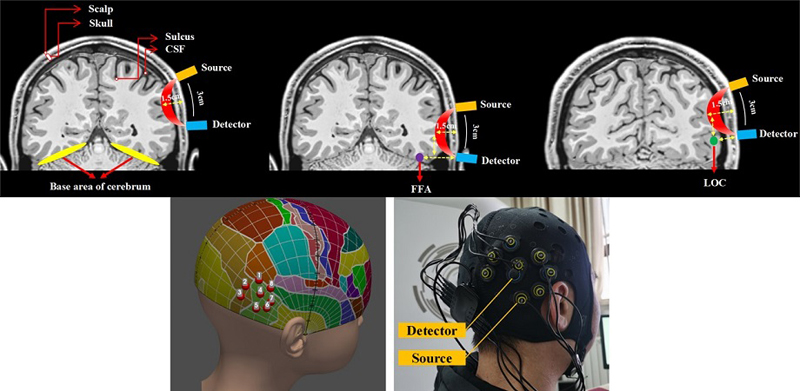| Functional near-infrared spectroscopy (fNIRS) can be performed using a portable emitter and detector placed on the scalp near a region of interest in the brain. By emitting and sensing light at specific frequencies, one can use fNIRS to detect changes in hemoglobin concentration, which correspond to brain activity. A transcranial brain atlas aids 3D localization for configuring optimal target channels. Image credit: W. Chai, P. Zhang, et al., doi 10.1117/1.NPh.11.1.015002. |
